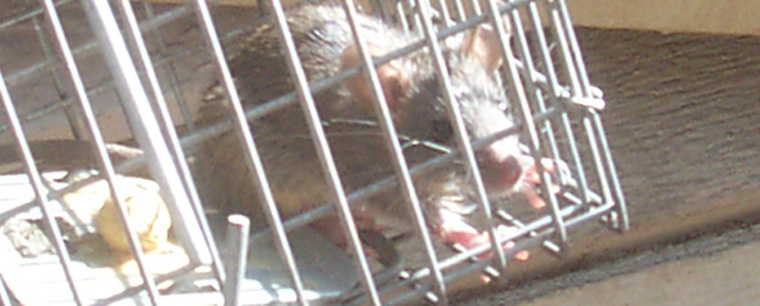-
info@aaanimalcontrol.com
Call us for help in your town
Humane Wildlife Education
Should I Relocate a Trapped Rat? Where?
Need rat removal in your hometown? We service over 500 USA locations! Click here to hire us in your town and check prices - updated for year 2020.
If you’ve chosen to take care of your rat problem with live exclusion, the only option you have is to make sure that all rodent access points to your house are sealed shut, and relocate the rat somewhere outside the house, preferably at a big distance from your home so that the rat can’t return and gnaw its way through back inside.

However, don’t fool yourself by thinking that you’re doing the humane thing here. The rat you’ve just released will probably die pretty soon after relocation, as studies have shown that few rats survive the transition. Death by starvation, by predators, or by competition from other rats are the most common reasons why a rat won’t survive much longer after it’s been uprooted from what was probably its only known environment.
What’s more, tackling the problem by relocating the rat will probably not solve your rat problem. Cases where a single rat has made a home on your property are pretty rare. And even if the rat was by its own, the odor of its presence and waste leave behind will attract other rats, different sorts of pests, and even predators such as snakes. Additionally, handling a live rat with untrained hands can be very risky. And there’s two reasons for that. One, the rat can easily escape your grip, or escape while you’re transporting it. Two, a rat will try and defend itself, so you’re exposing yourself to the unnecessary risk of being scratched or bitten. Always use protective gear when handling vermin.
The only truly humane and efficient method to deal with your rat problem is to trap it with the classic deadly snap trap, and dispose of the carcass. The rat will die a quick, instant death instead of a slow, violent death preceded by shock and trauma.
Make sure you educate yourself on rat behavior, biology, and life cycle before you start taking measures to fight these nuisance rodents. The more you’ll know, the closer you’ll get to the same conclusion I’ve drawn after getting familiar with this animal – invasive rats need to be annihilated.
For more information, you may want to click on one of these guides that I wrote:
How much does rat removal cost? - get the lowdown on prices.
How to get rid of rats - my main rat removal info guide.
Example rat trapping photographs - get do-it-yourself ideas.
Rat job blog - learn from great examples of rat jobs I've done.


















